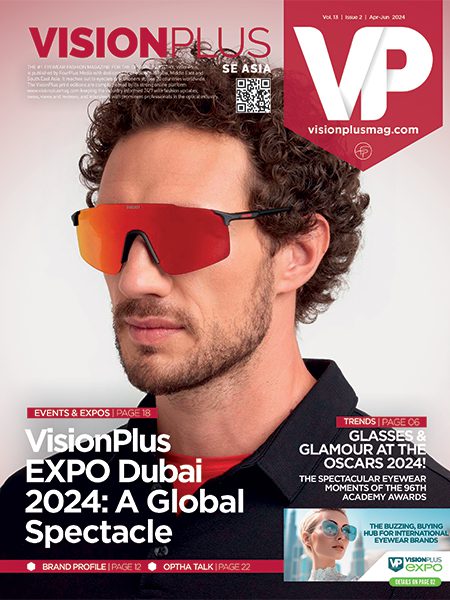This post is also available in:
![]()
![]()
![]()
![]()
![]()
![]()


Catching Eye Conditions Early in Children
Visual learning is a key part of every child’s experience during the stages of their growth. A child’s eyesight helps them to navigate the world around them especially during their most formative years where they start to read, write, draw and much more. As parents and guardians, helping children on their journey by ensuring their vision is protected is imperative
Recognising problems that disrupt the child’s vision is something that parents must always be aware about. Not only does this help with identifying diseases early but they may also be able to treat them accordingly before they worsen over the passage of time.
A common but simple practice for guardians to follow would be to follow the RSVP rule which stands for Redness, Sensitivity to light, Vision change and Pain. Any of these symptoms or sometimes even multiple of them showing at a time are valid concerns to take your child to seek medical attention immediately.
Let us take a look at a few other symptoms for parents to be concerned about if noticed and what they may mean.
Frequent Blinking or Rubbing of the eyes
It is common to notice an infant or toddler run their eyes often. Most times there are either children reacting to emotional cues or trying to ease any discomfort they may experience due to allergens or other irritants and these issues can easily be resolved with over the counter eye drops and are not cause to worry.
However noticing frequent or repeated rubbing or blinking can indicate problems of nearsightedness and even lead to damaging of the eye if done too aggressively.
 Colored spots on the white of the eye
Colored spots on the white of the eye
Different colored spots may appear on the white parts of children’s eye, the colors and sizes of these spots may help to give a better idea of what the issue may be.
Red spots : This is one of the most obvious signs of a subconjunctival hemorrhage. This occurs due to a broken blood vessel on the surface of the eye. Despite its scary appearance, these spots are often not a cause of worry and do not affect vision.
Gray Spots: While this may be a symptom of low iron or anemia or other mild conditions, there may be instances where they could mean something more serious. Thus it is recommended for parents to consult their eye care practitioners for a better evaluation.
Spots that appear after a child has suffered an injury also must immediately be taken to consult with their eye care specialist.
Dilated Pupils
As compared to adults, children’s pupils often seem to be larger or more dilated. Dilation in children with lighter colored eyes is more commonly found and tends to last longer.
While these are natural, it becomes a cause for concern if there are other symptoms such as dizziness, nausea, headaches and unusual behaviors accompanying their dilated eyes as this could be due to a concussion.
In addition, enlarged pupils when they are engaging in memory related tasks can also be signs of ADHD (attention deficit hyperactivity disorder) in children.
Misaligned Eyes
Another common eye condition that children may experience is the misaligned eyes where in the child’s eyes may not be lined up together and may point towards different directions. This condition is known as Strabismus. Children may be born with this condition or may develop it later during their course of life.
Strabismus affects the vision of the child and if left undiagnosed and untreated it can lead to amblyopia or more commonly known as ‘lazy eye’. Recognizing these symptoms early can help in preventing the condition from getting more complicated.
Eye Discharge
Particles like dirt, sand, eyelashes that accidentally fall into the eye or using dirty hands to rub eyes can all cause the production of mucus in the eyes.
This is commonly noticed after a period of sleeping and is normal and healthy for children to experience. But sometimes, discharge from the eyes - caused due to inflammation - can end up drying on the eyes and lead to other issues.
Blockages of the tear duct can be one of the problems to arise from these crusty eyes which prevent tears from draining normally and hence lead to chronic infections and irritated eyes.
Conjunctivitis, also known as ‘pinkeye’ is another cause for these crusty eyes. The eyes tend to appear red, inflamed and itchy. Visiting an eye specialist for these issues can help soothe discomfort and help to provide the right
kind of treatment.
Tilting their head to see better
Children may sometimes tilt their heads in order to adjust their vision to see more clearly, this may often be due to misalignment in the eyes as mentioned earlier in this article. Furthermore, tilting their head can hint towards a refractive error such as nearsightedness
or myopia.
Children tend to look at objects with their chins up if they are nearsighted. On the other hand, they look at objects with their chins down if they are farsighted.
Astigmatism can cause children to tilt their heads to help them see better. In more severe and rare cases, paralyzed muscles in the eyes can also lead to tilting their heads.
As children grow, their eyesight also develops with time. Monitoring their eye health regularly throughout their childhood helps to identify symptoms (if any) that may be unusual and get help accordingly to resolve them as early as possible to ensure the best for their eyes.







